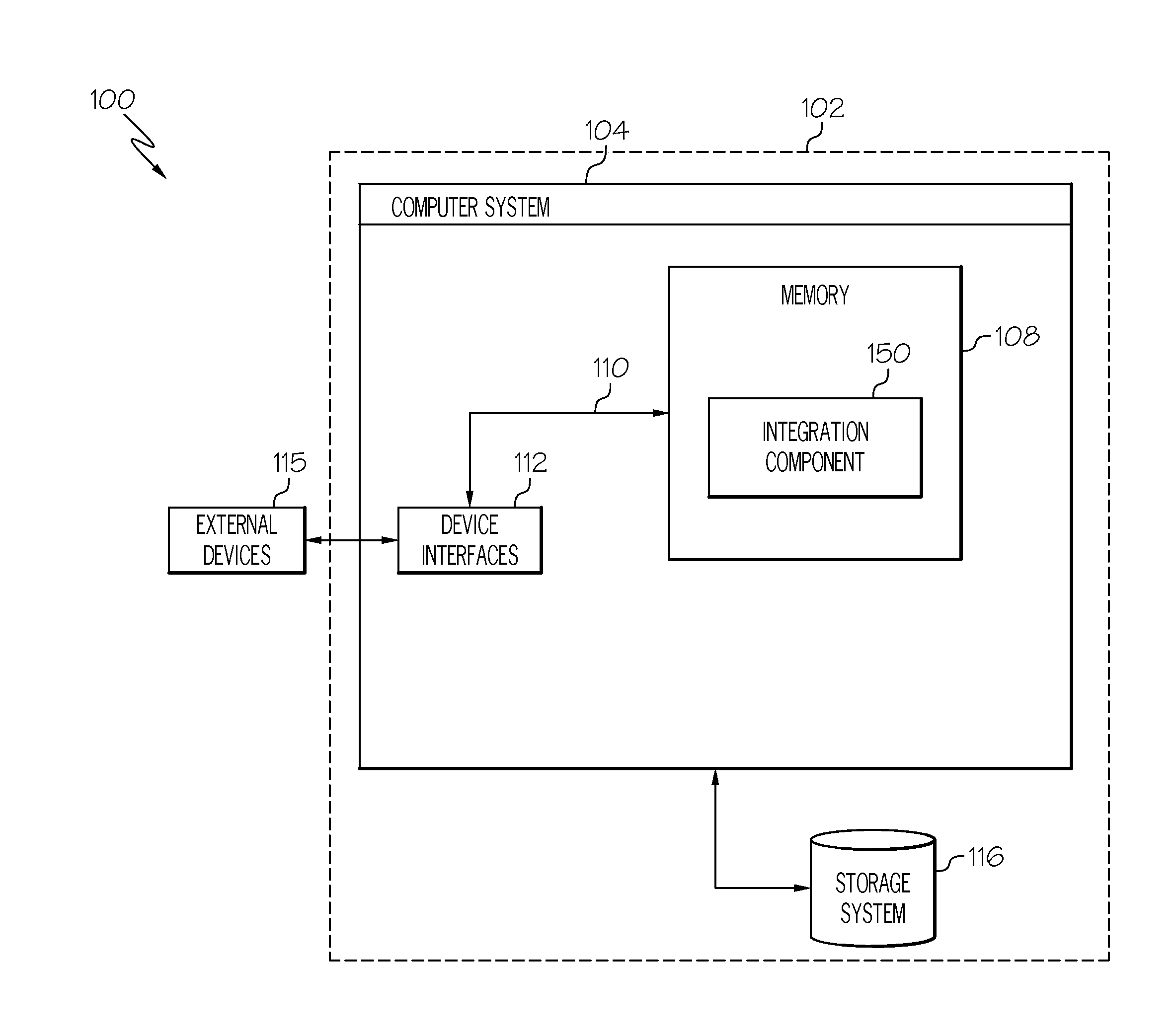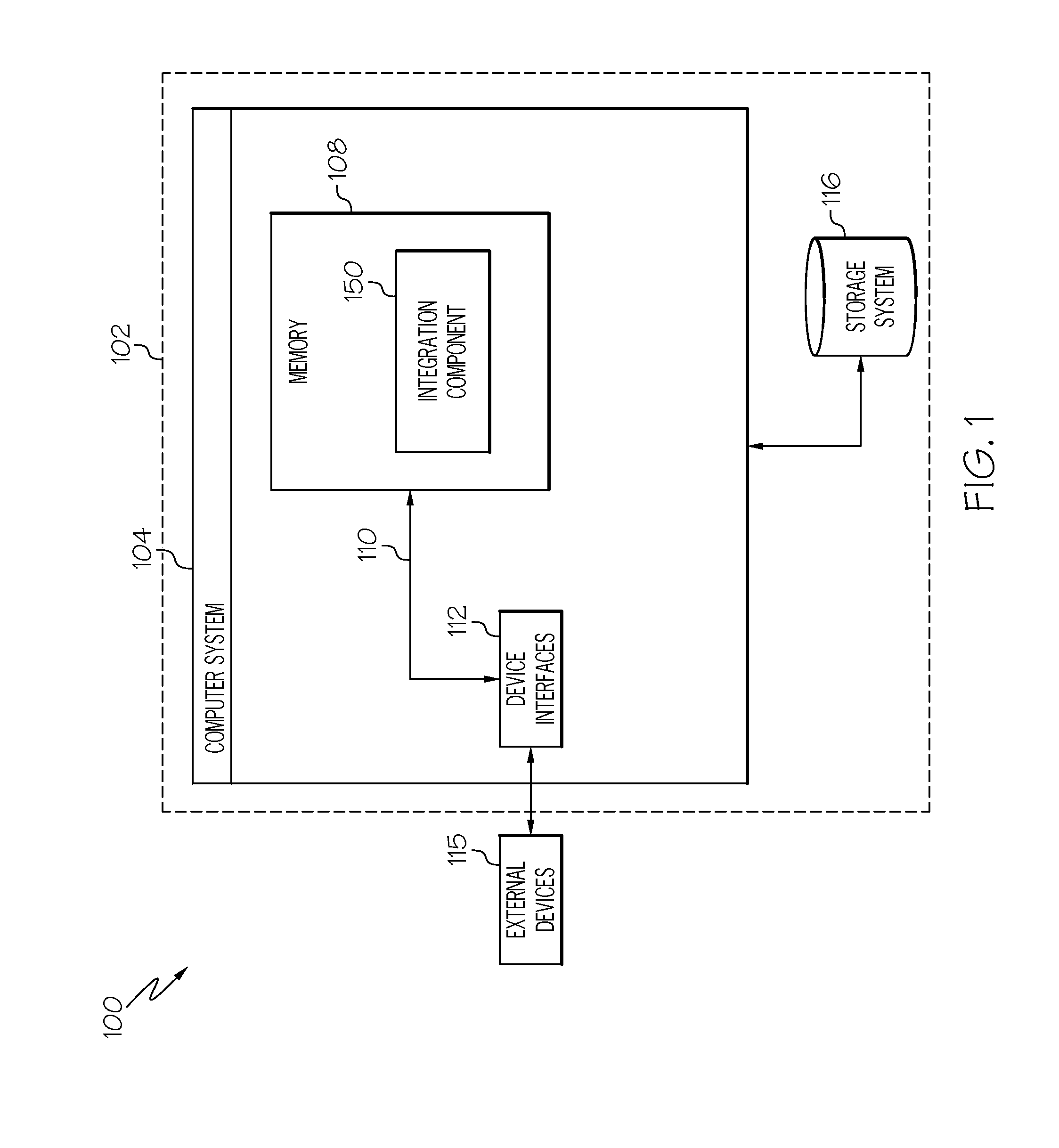Data integration using automated data processing based on target metadata
a data integration and target metadata technology, applied in the field of data processing, can solve the problems of large modification requirements of etl tools, even custom scripts, and even large number of process nodes, and achieve the effect of reducing the overall development effor
- Summary
- Abstract
- Description
- Claims
- Application Information
AI Technical Summary
Benefits of technology
Problems solved by technology
Method used
Image
Examples
Embodiment Construction
[0014]The invention will now be described more fully herein with reference to the accompanying drawings, in which exemplary embodiments are shown. Embodiments described herein provide data integration between multiple IT sources using automated data processing based on target metadata. Specifically, an integration component is configured to load a mapped data set into a table with delta processing based on a configuration object containing, e.g., the source data location, target table name, and source to target mapping. The integration component uses the target metadata to validate data, identify changes, generate the necessary database programming language (e.g., structured query language (SQL)), and run the database programming language with data binding to perform the actual data updates. The integration component leverages the data target metadata to automate the processing of source data, thus providing a way to validate the data, and identify delta changes at the field level b...
PUM
 Login to View More
Login to View More Abstract
Description
Claims
Application Information
 Login to View More
Login to View More - R&D
- Intellectual Property
- Life Sciences
- Materials
- Tech Scout
- Unparalleled Data Quality
- Higher Quality Content
- 60% Fewer Hallucinations
Browse by: Latest US Patents, China's latest patents, Technical Efficacy Thesaurus, Application Domain, Technology Topic, Popular Technical Reports.
© 2025 PatSnap. All rights reserved.Legal|Privacy policy|Modern Slavery Act Transparency Statement|Sitemap|About US| Contact US: help@patsnap.com



